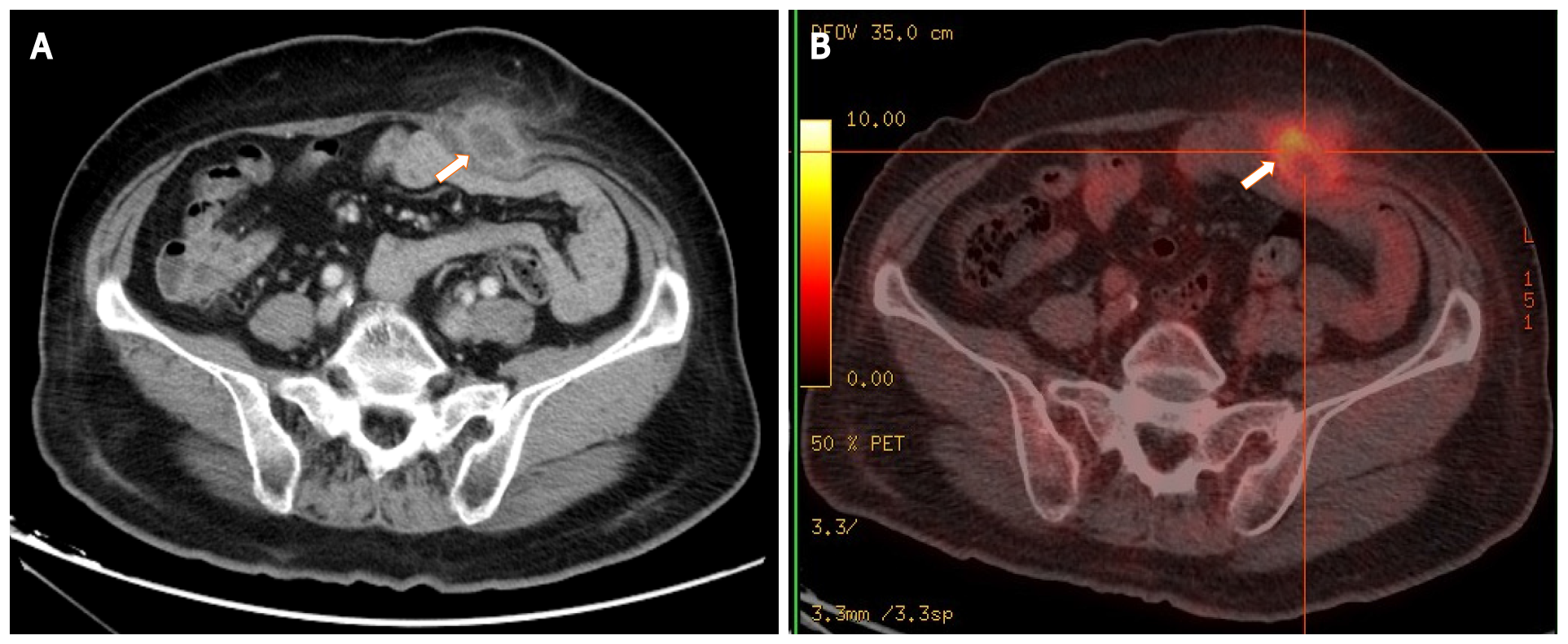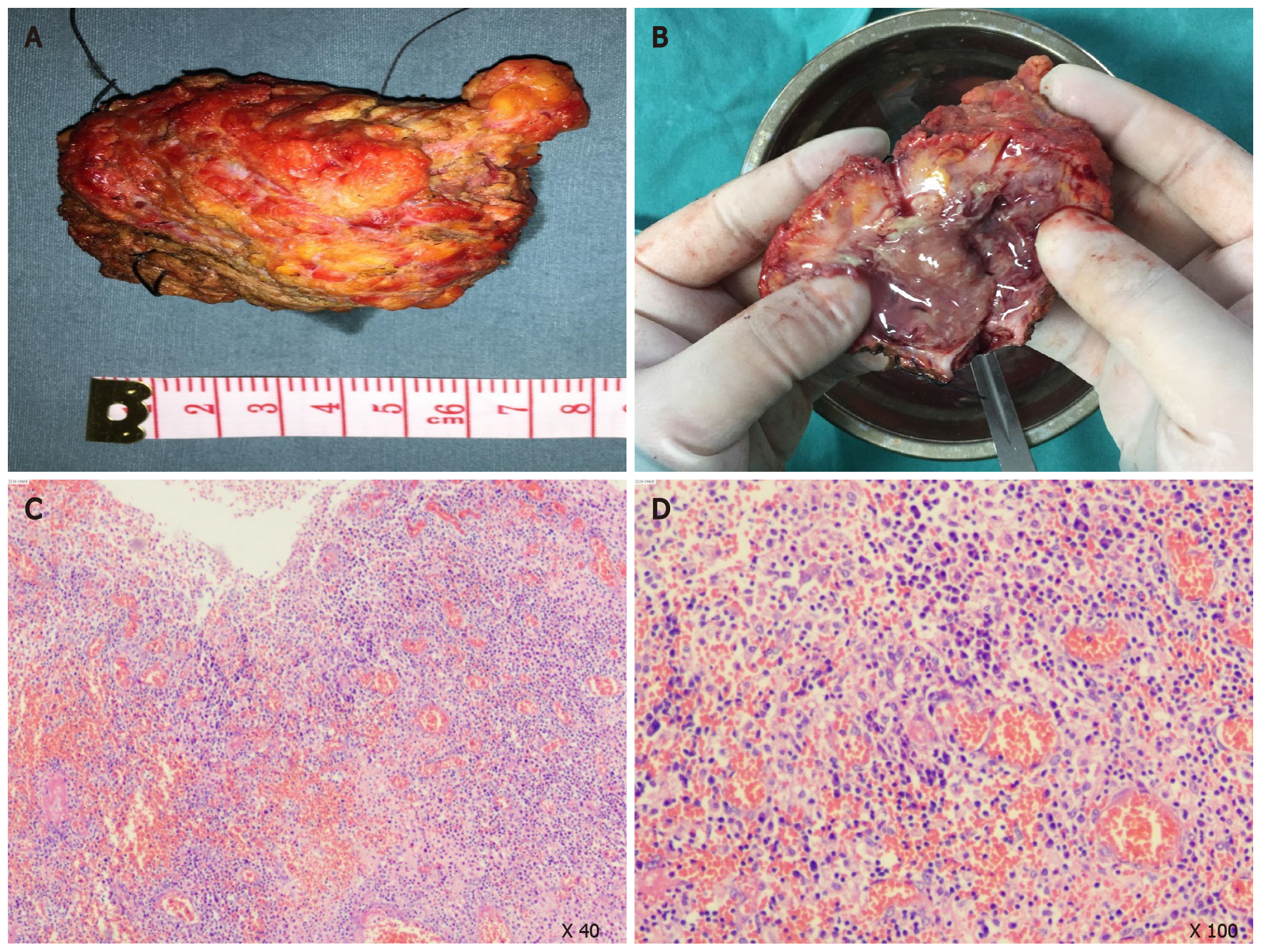Copyright
©The Author(s) 2022.
World J Clin Cases. Feb 16, 2022; 10(5): 1702-1708
Published online Feb 16, 2022. doi: 10.12998/wjcc.v10.i5.1702
Published online Feb 16, 2022. doi: 10.12998/wjcc.v10.i5.1702
Figure 1 Images of the mass by contrast-enhanced abdominal computed tomography and 18F-fluorodeoxyglucose-positron emission tomography.
A: Computed tomography (CT) shows a low-density mass with rim enhancement adjacent to the rectus abdominis in the lower abdominal wall; B: 18F-fluorodeoxyglucose-positron emission tomography/CT shows high uptake of fluorodeoxyglucose by the mass, with a maximum standardized uptake value of 6.0. The white arrows indicate the mass.
Figure 2 Gross appearance of the mass in surgery.
A: The mass was grey white with an irregular shape; B: There were purulent exudates in the center of the mass; C and D: Pathological examination of the specimen revealed a large number of infiltrated neutrophils, lymphocytes, and macrophages in the adipose and connective tissues, accompanied by focal abscess, inflammatory granulation tissue formation, and interstitial fibrosis.
- Citation: Yu Y, Feng YD, Zhang C, Li R, Tian DA, Huang HJ. Aseptic abscess in the abdominal wall accompanied by monoclonal gammopathy simulating the local recurrence of rectal cancer: A case report. World J Clin Cases 2022; 10(5): 1702-1708
- URL: https://www.wjgnet.com/2307-8960/full/v10/i5/1702.htm
- DOI: https://dx.doi.org/10.12998/wjcc.v10.i5.1702










